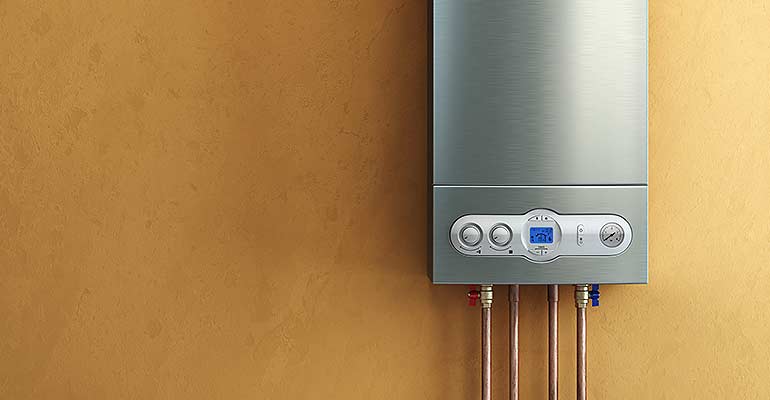Almost everyone has got their own rationale on the subject of Water Heater Maintenance Tips You Can't Afford to Forget.

Hot water is vital for day-to-day convenience, whether it's for a revitalizing shower or cleaning dishes. To ensure your warm water system runs effectively and lasts much longer, normal upkeep is vital. This write-up gives sensible tips and understandings on how to preserve your home's warm water system to stay clear of disruptions and pricey repairs.
Introduction
Preserving your home's hot water system may appear overwhelming, however with a couple of straightforward actions, you can guarantee it operates smoothly for years to come. This guide covers everything from understanding your hot water system to DIY maintenance ideas and understanding when to contact expert assistance.
Value of Keeping Your Warm Water System
Normal upkeep not just expands the life-span of your warm water system yet additionally guarantees it runs effectively. Ignoring upkeep can cause reduced effectiveness, greater energy bills, and even premature failure of the system.
Indicators Your Warm Water System Demands Upkeep
Recognizing when your warm water system needs interest can avoid major issues. Look out for indicators such as irregular water temperature level, odd noises from the heating unit, or rusty water.
Flushing the Hot Water Heater
Purging your hot water heater eliminates sediment buildup, boosting performance and lengthening its life.
Checking and Replacing Anode Rods
Anode rods protect against deterioration inside the storage tank. Examining and changing them when broken is vital.
Complicated Concerns Calling For Expert Help
Examples consist of major leaks, electric troubles, or if your water heater is consistently underperforming.
Regular Expert Maintenance Benefits
Expert maintenance can consist of complete evaluations, tune-ups, and ensuring compliance with safety and security requirements.
Inspecting and Changing Temperature Setups
Changing the temperature setups ensures ideal performance and safety and security.
Do It Yourself Tips for Maintenance
You can carry out several upkeep tasks on your own to keep your warm water system in top condition.
Looking for Leaks
Consistently examine pipes and links for leaks, as these can cause water damage and greater bills.
Recognizing Your Hot Water System
Prior to diving into upkeep tasks, it's practical to understand the basic elements of your hot water system. Normally, this includes the hot water heater itself, pipes, anode poles, and temperature controls.
Regular Monthly Upkeep Tasks
Regular month-to-month checks can help capture minor problems prior to they intensify.
Examining Pressure Alleviation Valves
Testing the pressure safety valve ensures it works appropriately and avoids extreme pressure accumulation.
Shielding Pipes
Protecting warm water pipes minimizes warmth loss and can save power.
When to Call a Professional
While DIY upkeep is beneficial, some issues need professional knowledge.
Verdict
Regular maintenance of your home's warm water system is essential for effectiveness, durability, and price savings. By complying with these pointers and knowing when to seek expert assistance, you can make certain a dependable supply of hot water without unanticipated disturbances.
Water Heater Maintenance Tips
Test the TPR Valve
Shut off the power and the cold-water supply valve. Place a bucket under the pipe connected to the temperature-pressure-release (TPR) valve on the top or side of the tank. (This valve opens if the tank pressure gets too high.) Lift the valve’s tab to let some water out, then let go. If water keeps flowing, drain the tank partway, unscrew the old valve with a pipe wrench, and install a new one. Check the Anode Rod
Put a hose to the tank’s drain cock and let out a few gallons of water. Now fit a 1 1/16-inch socket onto the rod’s hex head on top of the heater (or under its top plate) and unscrew the rod. If it’s less than ½ inch thick or coated with calcium, buy a new one, wrap its threads with Teflon tape, put it back in the tank, and tighten securely. Use this segmented rod if headroom above the tank is limited. Drain the Tank and Wash Out Sediment
Drain the remaining water in the tank into the bucket, then stir up the sediment on the tank’s bottom by briefly opening the cold-water supply valve. Drain and repeat until clean water comes out of the hose. Close the drain cock, refill the tank, and turn its power back on. Adjust the Temperature
Find the temperature dial on the side of the tank and unscrew its cover. Adjust the dial to 120 degrees using a flathead screwdriver. For every 10 degrees the temperature is lowered, you can expect to save up to 5 percent in energy costs. Turn the water heater off or the thermostat down to its lowest setting if you plan to be away from home for more than three days. Insulate the Pipes
Buy some self-sticking 3/8-inch-thick foam pipe insulation that matches the pipes’ diameter. Slide the foam over the hot-and cold-water pipes as far as you can reach. Insulating the cold-water pipe prevents condensation in summer. Peel the tape and squeeze the insulation closed. If the pipe is 6 inches or less from the flue, cover it with 1-inch-thick unfaced fiberglass pipe wrap. https://www.thisoldhouse.com/plumbing/21016402/how-to-maintain-a-water-heater

We are very fascinated by Water Heater Maintenance Tips You Can't Afford to Forget and I'm hoping you enjoyed the new page. I beg you set aside a second to distribute this blog posting if you liked it. We enjoy reading our article about Tips on Maintaining a Water Heater.
Go Deal Now